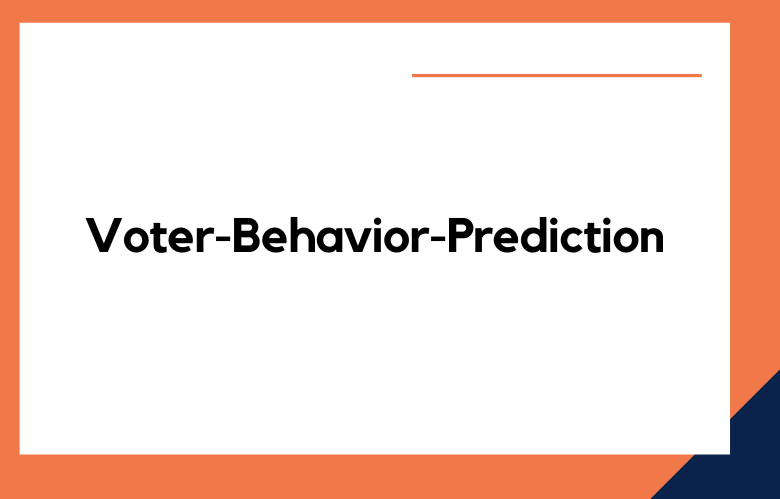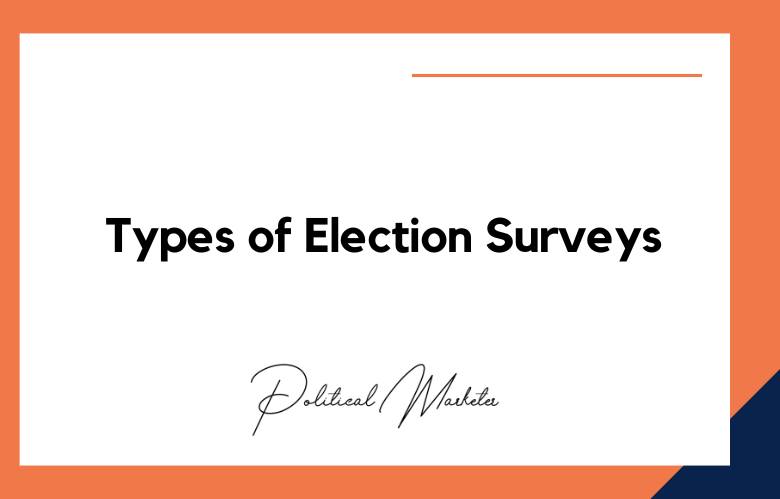Elections are the cornerstone of any democracy. They give people the power to choose their leaders, hold them accountable, and safeguard their rights and freedoms. But while elections are simple in theory, their preparation can be anything but. Political parties must work hard to understand voters’ mindsets, predict their behavior, and design campaigns that resonate with them.
This is where the power of machine learning comes in, offering exciting possibilities to understand voter behavior patterns and predict election outcomes.
Machine learning is a subset of artificial intelligence that enables machines to learn from data and make predictions without being explicitly programmed.
Machine learning algorithms use historical data, such as voting history and demographic information, to identify patterns and make predictions to predict voter behavior. The more data available, the better the predictions are likely to be.
Vote Like a Pro: How Machine Learning Can Predict Voter Behavior
In recent years, advancements in machine learning have paved the way for predicting voter behavior with increasing accuracy. This is achieved by analyzing multiple data points from various sources, such as social media activity, past voting records, and demographic information.
One example of how machine learning has successfully predicted voting behavior is through the analysis of social media data. By analyzing users’ behavior, sentiments, and engagement with political content, machine learning algorithms can accurately predict political affiliations and voting patterns.
Cracking the Code: Using Machine Learning to Forecast Voter Behavior
In a rapidly changing political landscape, predicting how a voter will behave at the ballot box can be a crucial tool for success.
With the advent of machine learning, campaigners can now apply highly sophisticated algorithms to massive amounts of data to gain insights into voter behavior. This technique is known as “cracking the code” of voter behavior and has become an increasingly popular tool for predicting election outcomes.
One of the critical advantages of machine learning in predicting voter behavior is its ability to mine vast datasets in real time. In the past, campaigns relied on polling data, which could be slow and expensive to collect.
With machine learning, however, campaigns can gather data from various sources, including social media, voter registration databases, and consumer purchasing patterns. By analyzing this data, movements can create highly detailed profiles of individual voters, enabling them to target their messaging and outreach efforts more effectively.
Unlocking the Voting Patterns: Machine Learning in Voter Behavior Predictions
Unlocking the Voting Patterns: Machine Learning in Voter Behavior Predictions” is a cutting-edge area of research that leverages the power of artificial intelligence (AI) to predict and understand voter behavior.
This emerging field taps into the vast amounts of data generated by political campaigns, surveys, public opinion polls, and other sources to uncover hidden patterns and insights about how people vote.
One of the key benefits of using machine learning algorithms in voter behavior predictions is the ability to identify correlations between different variables.
For example, by analyzing social media data, machine learning models can detect how specific topics or issues resonate with voters and predict how these sentiments will translate into voting patterns. These insights can help political campaigns tailor their messaging and advertising to specific groups of voters, increasing the likelihood of success.
Decoding Democracy: Harnessing Machine Learning to Forecast Voter Choices
In recent years, there has been a growing interest in harnessing the power of machine learning to forecast voter choices.
The idea behind this is to use historical data and various algorithms to predict how individuals are likely to vote in future elections. By doing so, political campaigns can better target their messaging, focus their resources, and attract potential voters who might otherwise have stayed away from the polls.
One of the key advantages of using machine learning in this context is that it allows for a much deeper analysis of historical data than is possible through traditional methods.
For example, machine learning algorithms can consider factors influencing an individual’s voting behavior, such as demographic data, social media activity, and weather.
The Power of Predictive Analytics: Machine Learning in Voter Behavior
With the advent of technology and sophisticated algorithms, predictive analytics have emerged as a powerful tool for understanding voter behavior. Applying machine learning algorithms in political campaigning has revolutionized how political candidates target their voter base and strategies to win elections.
Predictive analytics in voter behavior enables the creation of targeted campaigns that communicate specific messages to voters based on their demographics, psychographics, and socio-economic backgrounds.
By analyzing data from social media, voter registration records, and other sources, machine learning algorithms can identify patterns and trends that enable political campaigners to understand the issues most important to their target audience.
Machine Learning Magic: Unlocking Voter Behavior Patterns
Machine learning has taken the world by storm, introducing artificial intelligence and predictive analytics to various industries. Its impact on politics is no exception. By analyzing large sets of data, machine learning algorithms can uncover patterns in voter behavior that were previously hidden.
The insights gained from such analyses are precious, particularly in election campaigns. By identifying specific behaviors and attitudes indicative of voting preferences, politicians can tailor their messaging and outreach to particular segments of the electorate. This can improve voter turnout and ultimately sway the outcome of elections.
Democratizing Democracy: Machine Learning for Predicting Voter Choice
Democratizing Democracy has always been a primary goal of governments across the globe. With the advent of the digital age, technology has become a key enabler in realizing this goal.
One of the latest technologies at the forefront of this effort is machine learning, a field of artificial intelligence that allows computers to learn from data without being explicitly programmed.
In particular, machine learning offers a unique and powerful tool for predicting voter choice. By leveraging large datasets and sophisticated algorithms, machine learning models can accurately predict which candidate or party a voter will likely support.
This has the potential to significantly improve the efficiency and effectiveness of political campaigns and also help people make more informed choices when voting.
Mastering the Vote: How Machine Learning Can Predict Voter Behavior
With the advent of modern technology, machine learning has become an increasingly powerful tool in many areas of life, including politics.
By analyzing vast amounts of data on voters’ behavior, preferences, demographics, and other factors, machine learning algorithms can accurately predict how people are likely to vote in any given election.
This technology has already been put to use in political campaigns around the world. For example, during the 2016 US presidential election, the Trump campaign used machine learning algorithms to identify swing states and determine the most effective messages to send voters based on their demographics and behavior.
Unraveling the Voter’s Mind: Machine Learning and Behavioral Prediction
The field of machine learning is becoming increasingly significant in modern society. From predicting consumer behavior to identifying patterns in healthcare data, algorithms are being trained to perform increasingly complex tasks that were once the sole purview of human experts.
One area where machine learning is now being applied is in the prediction of voter behavior. By analyzing large datasets of voter information, machine learning models can provide insight into the motivations and preferences of individual voters. This knowledge can be used to develop targeted political messaging and mobilize voters during election season.
One of the key advantages of using machine learning to analyze voter behavior is the ability to identify patterns that may be difficult for humans to detect. For example, machine learning algorithms can identify relationships between demographic characteristics such as age, race, and gender, and voting patterns.
The Future of Elections: Machine Learning in Voter Behavior Forecasting
Machine learning has revolutionized many areas of our lives, and it has the potential to make election predictions highly accurate. With the amount of data generated online and offline, machine learning algorithms can use this data to identify trends and patterns that are not easily identifiable by humans.
In particular, voter behavior forecasting is an area where machine learning can significantly improve accuracy.
The goal of voter behavior forecasting is to predict how voters will vote based on their demographic, social, and economic characteristics. This data is then analyzed with machine learning algorithms to identify patterns and trends that can be used to predict how the voter will behave in the future.
Conclusion:
Predicting voter behavior is a crucial part of election campaigns. Machine learning offers exciting possibilities for understanding voter behavior patterns and predicting election outcomes.
By leveraging social media data, survey data, historical voting data, and even weather patterns, machine learning algorithms can identify patterns and make accurate predictions. As political campaigns become more data-driven, machine learning will likely become an essential tool in predicting voter behavior and winning elections.
Call: +91 9848321284
Email: [email protected]










